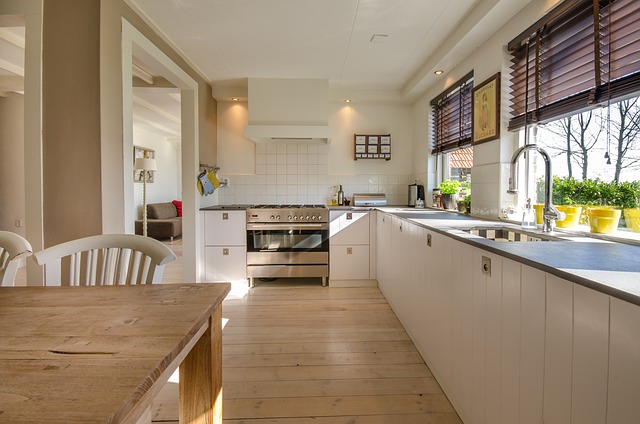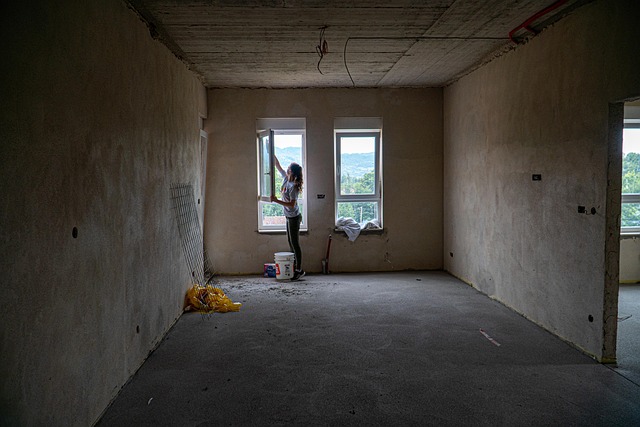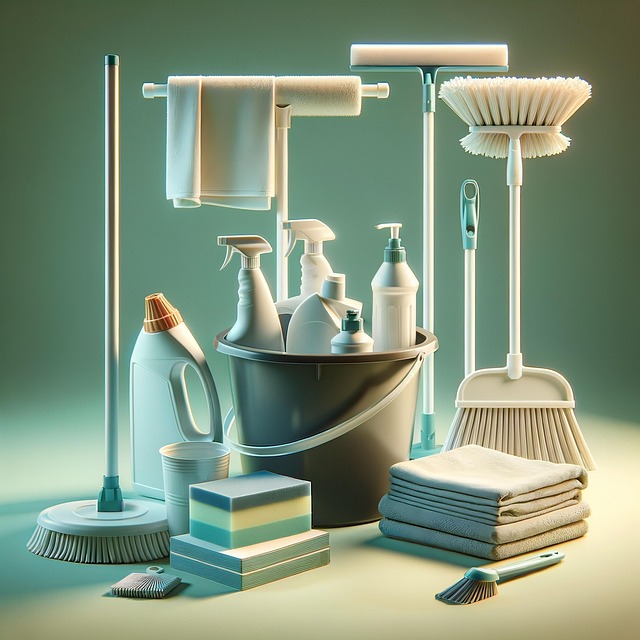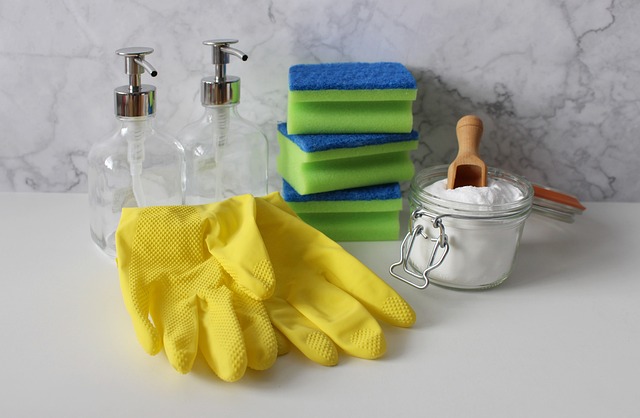Understanding and identifying your kitchen floor type (tile, vinyl, linoleum, wood, or concrete) is crucial for effective cleaning and restoration. Regular deep cleaning routines, including mopping and removing grime, sealing, and polishing, are vital to preserve the floor's beauty and longevity. Different flooring types require specific cleaning methods—mild detergent for ceramic tiles, pH-neutral cleaner for linoleum, and specialized care for wood floors—to maintain hygiene and prolong lifespan. Effective kitchen floor cleaning starts with sweeping/vacuuming, using suitable cleaners, letting them dissolve marks, rinsing, and sealing for enhanced protection. Regular sealing and polishing keep floors in top condition.
Revitalize your kitchen floor with our comprehensive guide to restoration. From understanding diverse floor types and materials to mastering regular cleaning routines, this article is your navigation system through the process. Learn effective deep cleaning methods for preparation and protection, explore tailored techniques for various surfaces, and discover remedies for scuffed and stained floors. We’ll also delve into sealers, polishes, and long-term protective measures, ensuring your kitchen floor not only looks stunning but remains that way.
Understanding Your Kitchen Floor: Types and Materials

Understanding your kitchen floor is crucial for effective cleaning and restoration. Kitchen floors are often subject to heavy foot traffic, spills, and stains from various materials. The first step in any restoration process begins with identifying the type and material of your floor. Tile, vinyl, linoleum, wood, and concrete are some of the most common types of kitchen flooring. Each material requires a tailored cleaning approach due to its unique properties and maintenance needs.
Tile floors, for instance, can be easily cleaned but may require grout resealing. Vinyl and linoleum floors, known for their durability, still need regular vacuuming and specific cleaning solutions to prevent damage. Wood floors demand more meticulous care, including polishing and regular sealing to protect the grain. Concrete floors, while robust, benefit from regular sealing to resist stains. Identifying your floor’s composition enables you to choose the most suitable cleaning methods for kitchen floor restoration.
The Importance of Regular Cleaning and Maintenance

Regular cleaning and maintenance are essential aspects of kitchen floor restoration. Kitchen floors often bear the brunt of daily activity, enduring constant exposure to moisture, food stains, and heavy foot traffic. Proper care can prevent early wear and tear, preserving the floor’s aesthetics and extending its lifespan.
Effective kitchen floor cleaning involves more than just quick wipes. Deep cleaning routines, including thorough mopping and stripping away built-up grime, are necessary to maintain a hygienic environment. Regular maintenance also includes sealing and polishing, which protect the floor from water damage and stains, ensuring it remains in top condition for years to come.
Steps for Deep Cleaning: Preparing and Protecting

Deep cleaning your kitchen floor involves several preparation steps to ensure optimal results and protect your investment. Start by removing all furniture from the floor to gain easy access and clear space for cleaning. Next, sweep or vacuum thoroughly to eliminate dust, dirt, and debris. This initial step is crucial as it prevents scratches on the floor surface during cleaning.
Protecting your kitchen floor during the cleaning process is equally important. Use drop cloths or old towels to cover nearby countertops, cabinets, and walls. These barriers will catch any spilled cleaning solutions or water, preserving your fixtures from damage. Additionally, consider using a protective coating or sealer, especially if your floor is vulnerable to stains or has seen better days. This step ensures that your floor not only looks fresher but also lasts longer.
Effective Cleaning Techniques for Different Surfaces

When it comes to kitchen floor cleaning, the right techniques depend greatly on the type of flooring you have. For ceramic or porcelain tiles, a thorough scrubbing with a mild detergent and a stiff brush is effective in removing stubborn stains. Regular mopping with warm water can maintain their gloss. Vinyl floors require a gentler approach; a damp mop with a neutral cleaner works best to avoid damaging the surface. Wood floors need specialized care – a sweep or vacuum first, followed by a floor-specific cleaner and a dry buffing with a microfiber cloth.
For linoleum or stone flooring, use a pH-neutral cleaner to prevent etching or discoloration. Lighter stains can often be treated with a solution of warm water and white vinegar, while more stubborn marks might need a mild abrasive. Always test cleaning solutions in a small, inconspicuous area first to ensure they don’t affect the floor’s finish or color. Regular kitchen floor cleaning not only maintains their aesthetic appeal but also extends their lifespan, ensuring your space stays hygienic and inviting.
Restoring Scuffed and Stained Floors

Scuffed and stained floors can take a toll on any kitchen’s aesthetics and functionality. The good news is, with the right approach, restoring your kitchen floor to its former glory is achievable. Effective kitchen floor cleaning involves a combination of deep scrubbing, chemical treatments, and polishing. Start by sweeping or vacuuming to remove loose dirt and debris. Then, use a mild detergent or commercial cleaner suitable for your flooring type. Apply the cleaner using a mop or brush, focusing on stained areas. Let the cleaner sit for a few minutes to dissolve stubborn marks before rinsing thoroughly with clean water. For extra durability and a shiny finish, consider sealing the floor afterward. This step fills in small cracks and gaps, preventing dirt from infiltrating and causing further damage.
Sealers, Polishes, and Long-Term Protection

When it comes to kitchen floor restoration, choosing the right products for sealing and polishing is key to ensuring long-lasting protection. Sealers play a vital role in kitchen floor cleaning by creating a protective barrier against moisture, stains, and dirt. These protective coatings not only enhance the aesthetics of your floors but also make cleaning easier, as sealers repel liquids and prevent them from penetrating the floor’s surface.
Polishes, on the other hand, offer both aesthetic benefits and added protection. They bring out the natural gloss and shine of your kitchen flooring while also providing a layer of defence against everyday wear and tear. High-quality polishes contain UV stabilisers that protect against fading and discolouration caused by sunlight exposure. Combining regular sealing and polishing will keep your kitchen floors looking their best and extend their lifespan, making them a smart investment for any homeowner.
